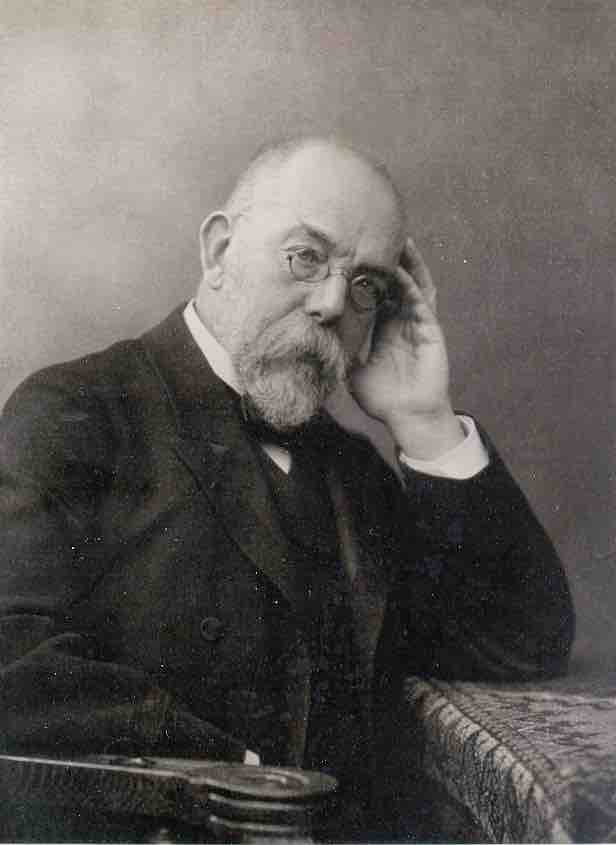Robert Koch was born in Clausthal in the Harz Mountains, then part of the Kingdom of Hanover, as the son of a mining official. He studied medicine at the University of Göttingen and graduated in 1866. He then served in the Franco-Prussian War and later became district medical officer in Wollstein (Wolsztyn), Prussian Poland. Working with very limited resources, he became one of the founders of bacteriology, the other major figure being Louis Pasteur.

Robert Koch
An image of Robert Koch, a pioneering microbiologist. Koch's research and methods helped link the causal nature of microbes to certain diseases, including anthrax.
After Casimir Davaine demonstrated the direct transmission of the anthrax bacillus between cows, Koch studied anthrax more closely. He invented methods to purify the bacillus from blood samples and grow pure cultures. He found that, while it could not survive outside a host for long, anthrax built persisting endospores that could last a long time. These endospores, embedded in soil, were the cause of unexplained "spontaneous" outbreaks of anthrax. Koch published his findings in 1876 and was rewarded with a job at the Imperial Health Office in Berlin in 1880. In 1881, he urged for the sterilization of surgical instruments using heat.
Probably as important as his work on tuberculosis, for which he was awarded a Nobel Prize in 1905, are Koch's postulates. These postulates stated that to establish that an organism is the cause of a disease, it must be found in all cases of the disease examined. Additionally, it must be absent in healthy organisms prepared and maintained in a pure culture capable of producing the original infection, even after several generations in culture retrievable from an inoculated animal and cultured again. By using his methods, Koch's pupils found the organisms responsible for diphtheria, typhoid, pneumonia, gonorrhoea, cerebrospinal meningitis, leprosy, bubonic plague, tetanus, and syphilis.
Perhaps the key method Koch developed was the ability to isolate pure cultures, explained in brief here. Pure cultures of multicellular organisms are often more easily isolated by simply picking out a single individual to initiate a culture. This is a useful technique for pure culture of fungi, multicellular algae, and small metazoa. Developing pure culture techniques is crucial to the observation of the specimen in question. The most common method to isolate individual microbes and produce a pure culture is to prepare a streak plate. The streak plate method is a way to physically separate the microbial population and is done by spreading the inoculate back and forth with an inoculating loop over the solid agar plate. Upon incubation, colonies will arise and single cells will have been isolated from the biomass.